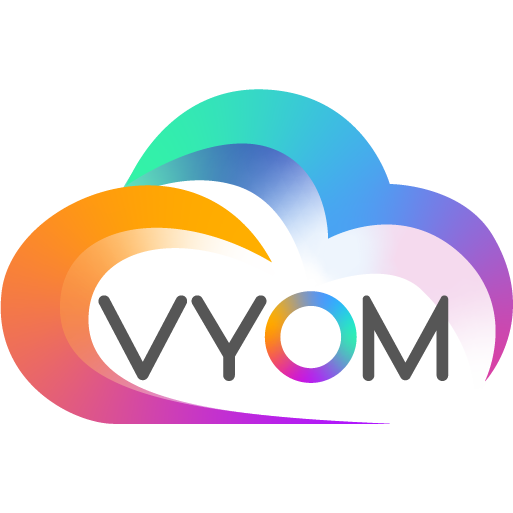In today’s digital age, cloud computing has transformed the way businesses and individuals store, manage, and access their data. But what exactly is cloud computing? This guide will explain the fundamentals of cloud computing, its advantages, types, and its role in transforming our digital world.
Understanding Cloud Computing
Cloud computing is the delivery of computing services like servers, storage, databases, networking, software, and analytics via the internet, commonly referred to as “the cloud.” Rather than owning and maintaining physical data centers or servers, users can access these resources on demand, paying only for what they use.
Imagine cloud computing as renting a fully equipped office space—you don’t own the building or the furniture, but you have everything you need to run your business. Similarly, cloud computing removes the need for costly infrastructure, providing a flexible and economical alternative.
Key Features of Cloud Computing
Cloud computing is defined by several important features:
- On-demand self-service: allows users to independently allocate resources such as storage and computing power whenever required, eliminating the need for manual assistance.
- Broad Network Access: Cloud services can be accessed from any device with an internet connection, providing flexibility and mobility.
- Resource Pooling: Cloud providers use multi-tenant models to serve many customers, sharing resources while ensuring security and privacy.
- Scalability and Elasticity: Resources can be adjusted based on demand, ensuring optimal usage and cost efficiency.
- Measured Service: Usage is tracked, controlled, and billed based on consumption, so users only pay for what they use.
Types of Cloud Computing
Cloud computing is not a one-size-fits-all solution. Different cloud models and deployment methods cater to various needs:
Service Models
- Infrastructure as a Service (IaaS): Delivers virtualized computing resources through the internet, allowing users to rent servers, storage, and networking components to develop and manage applications, without the need for physical hardware ownership.
- Platform as a Service (PaaS): Offers a platform for developers to build, test, and deploy applications, removing the need to handle the underlying infrastructure.
- Software as a Service (SaaS): Delivers software applications online via subscription. These applications can be accessed through web browsers without needing to install them locally.
Deployment Models
- Public Cloud: Services are provided via the internet and are shared across multiple organizations.
- Private Cloud: Exclusively allocated to one organization, providing enhanced control and security.
- Hybrid Cloud: Combines both public and private clouds, enabling businesses to balance scalability with security.
- Multi-Cloud: Uses multiple cloud providers to optimize performance, cost, and redundancy.
Benefits of Cloud Computing
Cloud computing provides a wide range of advantages for both businesses and individuals:
- Cost Savings: By eliminating the need for physical hardware and its maintenance, cloud computing reduces capital expenditures.
- Adaptability and Expandability: Cloud services can effortlessly adjust to meet fluctuating demand.
- Accessibility: With cloud computing, you can access your data and applications from anywhere with an internet connection.
- Disaster Recovery and Backup: Cloud solutions often include robust backup and recovery options, ensuring data safety in case of disruptions.
- Enhanced Collaboration: Teams can work together in real time, regardless of location, sharing files and information seamlessly.
- Automatic Updates: Cloud services automatically handle software and security updates, keeping systems current.
Common Use Cases of Cloud Computing
Cloud computing is widely used in various industries:
- Data Storage: Secure and scalable storage options for individuals and businesses.
- Web Hosting: Cloud hosting provides reliable, scalable hosting for websites and applications.
- Big Data and Analytics: Cloud computing powers data analysis tools that enable informed decision-making.
- AI and Machine Learning: Cloud services offer powerful resources for developing AI and machine learning applications.
- Remote Work and Collaboration: Cloud solutions enhance communication and productivity for remote teams.
Challenges and Considerations
While cloud computing offers many advantages, it’s important to consider potential challenges:
- Security and Privacy: Sensitive data security is crucial, and cloud providers must ensure robust protection measures.
- Downtime: Service outages can affect business operations, so reliability is important.
- Vendor Lock-In: Cloud providers should offer flexible solutions to minimize the risks of becoming tied to a single vendor.
- Compliance: Ensuring that cloud services meet industry regulations and compliance standards is vital for businesses.
The Future of Cloud Computing
The future of cloud computing looks promising, with emerging trends like edge computing, serverless architectures, and quantum computing paving the way for new innovations. VyomCloud offer new solutions to keep up with business needs and technological advances.
Conclusion
Cloud computing is more than just a trend; it represents a significant shift in how we interact with technology. Whether you are looking for easy storage solutions or aiming to streamline business operations, understanding cloud computing is crucial to leveraging its full potential. As cloud technology evolves, it will continue to offer new opportunities for businesses to improve efficiency, productivity, and growth.

engkn8
h64uns
eyjjg5
8lj80m
l0wtju
w9nul8
b7cg4e
jcx5nh
e804rz
7qipnv
I’ve read several good stuff here. Certainly worth bookmarking for revisiting. I wonder how much effort you put to make such a excellent informative website.
xp6acj
1hvmmg
qohxt0
d1yiqc
o90cf5
mnusnf
mktl5p
6jccfg
kk9kyr
0c9lt5
6raexw
You made some nice points there. I did a search on the topic and found most individuals will agree with your website.
5w4xsp
5br171